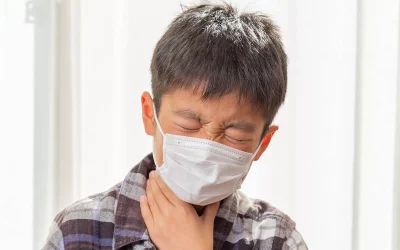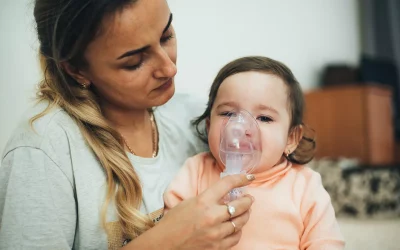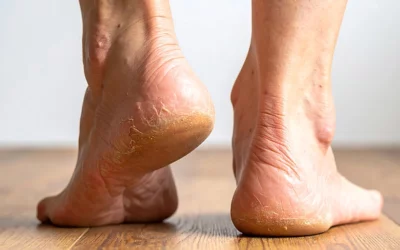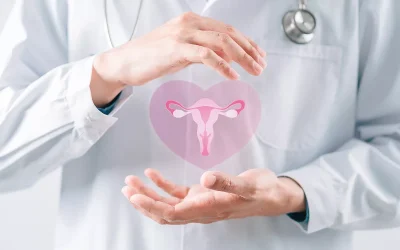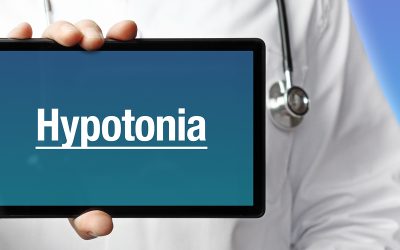JN.1 Variant of COVID-19: Symptoms, Treatment, Risk and Prevention
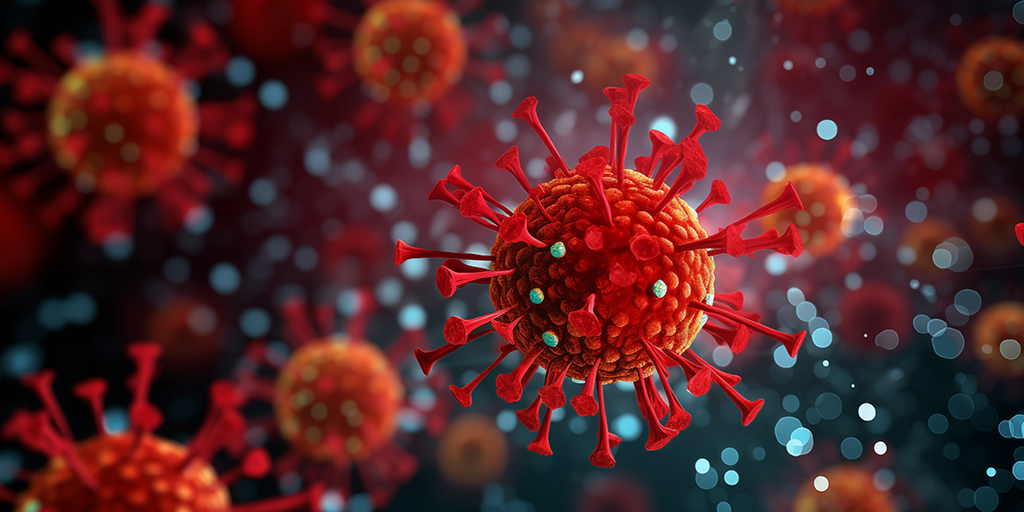
The COVID-19 pandemic impacted lives around the world, and even though the worst is behind us, the virus has continued to mutate into new variants. Over the past few years, variants such as Alpha, Delta, and Omicron have shaped different waves of the COVID-19 pandemic. Among these, Omicron and its sub variants have shown a higher tendency for rapid spread and immune evasion, even in previously vaccinated or infected individuals.
In recent weeks, a fresh wave of concern has emerged as health authorities begin reporting increasing cases of infections caused by the JN.1 variant of COVID-19. Believed to be a sub-lineage of Omicron, this new strain is drawing attention due to its potential to spread rapidly, and its implications for public health.
While JN.1 shares much of its genetic structure with the Omicron strain, it carries specific mutations in the spike protein that may influence how it behaves, particularly in terms of how easily it spreads or bypasses immunity. Understanding these mutation trends is essential for monitoring disease patterns, refining vaccine strategies, and guiding clinical care.
To help, in this article, we’ll explore the symptoms associated with the JN.1 variant, available treatment options, who may be at higher risk, and how to stay protected. Let’s start by understanding this new variant.
Table of Contents
ToggleWhat is the JN.1 Variant?
JN.1 is a subvariant of the Omicron lineage of SARS-CoV-2 – the virus responsible for COVID-19. It has gained attention due to its increasing prevalence across multiple regions, including India. Genetically, JN.1 descends from the BA.2.86 variant and carries distinct spike protein mutations, which may enhance its ability to spread and partially evade immunity from previous infections or vaccinations.
Although it does not appear to cause more severe illness compared to earlier Omicron variants, its high transmissibility has led to a noticeable rise in COVID-19 cases in several parts of the world. The World Health Organization (WHO) and national health authorities continue to monitor JN.1 closely, classifying it under “variants of interest” due to its potential impact on public health systems.
The variant’s rapid spread, even in populations with high vaccination rates, underscores the importance of maintaining vigilance, updating booster guidelines, and adapting testing and treatment strategies to the evolving virus landscape.
New COVID-19 Cases in India
India has witnessed a gradual rise in COVID-19 cases attributed to the JN.1 variant, with Uttarakhand among the states reporting new infections. According to recent updates, AIIMS Rishikesh confirmed three JN.1 cases, indicating the variant’s presence in the region. While overall case numbers remain relatively low, experts emphasise the importance of continued testing and surveillance to track emerging clusters.
Nationally, JN.1 has emerged as the most dominant strain, contributing to a moderate uptick in cases across several states. However, hospitalisation rates have not shown a sharp increase, suggesting that the majority of infections are either mild or manageable at home.
State health authorities in Uttarakhand have reinforced COVID-19 precautions and testing protocols, particularly in healthcare facilities and among high-risk groups. The emphasis remains on early detection, vaccination boosters, and maintaining preparedness in case of a localised surge.
Symptoms of the JN.1 Variant
The symptoms associated with the JN.1 variant are largely similar to those seen with other Omicron sub variants, but subtle shifts have been noted in clinical presentation. Most reported cases continue to be mild, particularly in vaccinated individuals, but symptoms can vary depending on age, immunity status, and underlying conditions.
Commonly Observed Symptoms
- Sore throat
- Runny or congested nose
- Dry cough
- Fatigue or body aches
- Mild fever or chills
- Headache
In some cases, gastrointestinal discomfort such as nausea or diarrhoea has also been reported. Notably, symptoms such as loss of taste or smell, which were more common in earlier COVID-19 waves, are now less frequently seen.
While many individuals recover with minimal intervention, those with pre-existing health conditions or weakened immunity should monitor for worsening signs such as shortness of breath or prolonged high fever, which may warrant timely medical attention.
How Fast Is JN.1 Spreading?
The JN.1 variant has demonstrated a notably high transmission rate, making it one of the fastest-spreading sub variants of Omicron to date. In several regions, including parts of India, it has quickly overtaken other circulating strains to become the dominant lineage within weeks.
Epidemiologists suggest that JN.1’s rapid spread may be due to its enhanced ability to bypass existing immunity, including that from prior infections or vaccination. However, this immune escape does not necessarily translate into increased severity.
While exact reproduction numbers (R0) are still under investigation, early trends indicate that JN.1 spreads efficiently through close contact, especially in indoor or poorly ventilated settings. Its growth advantage over other variants reinforces the need for continued genomic surveillance and timely public health responses to prevent further waves of infection.
How Is JN.1 Detected Through Testing?
Early and accurate detection of the JN.1 variant is critical in limiting its spread, especially since many of its symptoms overlap with seasonal flu or common cold. While no separate test is currently needed for JN.1, existing COVID-19 diagnostic methods remain effective for identifying infections.
RT-PCR (Reverse Transcription Polymerase Chain Reaction)
RT-PCR continues to be the gold standard for COVID-19 testing, including for JN.1. It detects viral RNA with high sensitivity and is often used to confirm infection in symptomatic individuals or those with known exposure. Some RT-PCR assays may also indicate variant-specific markers, which are further confirmed through genomic sequencing.
Rapid Antigen Tests (RATs)
Rapid tests offer results within minutes and are useful for quick screening, especially in home settings or during community outbreaks. However, they may be less sensitive to low viral loads and may not always detect early-stage infections with JN.1.
Multiplex PCR Tests
These are advanced diagnostic panels capable of detecting multiple respiratory viruses, including influenza, RSV, and SARS-CoV-2, in a single test. They are particularly helpful in differentiating COVID-19 from other infections with similar symptoms during flu seasons or outbreaks.
For confirmed cases, genome sequencing may be conducted at select laboratories to identify the specific variant, including JN.1, as part of broader public health surveillance.
Treatment Options
Most cases of the JN.1 variant continue to be mild and manageable at home with symptomatic care. However, treatment decisions depend on the severity of symptoms, age, underlying health conditions, and risk of complications.
Home Care vs. Hospital Care: When to Escalate
Individuals with mild symptoms such as low-grade fever, sore throat, and fatigue can usually recover at home with adequate rest, hydration, and over-the-counter medications. However, hospitalisation may be required if symptoms worsen, especially in cases of persistent high fever, shortness of breath, chest pain, or oxygen saturation below 94%.
Medications Currently Used
Treatment generally involves:
- Antipyretics such as paracetamol for fever and body aches
- Antivirals like molnupiravir or favipiravir (used selectively based on case severity and risk profile)
- Oxygen therapy and respiratory support for moderate to severe cases
- Steroids or immunomodulatory drugs (in hospitalised patients under specialist supervision)
Updates on Vaccine Effectiveness and Boosters Against JN.1
Preliminary findings suggest that existing vaccines, including Covaxin and Covishield, continue to provide protection against severe disease and hospitalisation, even if breakthrough infections occur. Booster doses, particularly with updated formulations targeting Omicron variants, are recommended for high-risk individuals.
Role of Monoclonal Antibodies (If Applicable)
The use of monoclonal antibodies has reduced due to limited effectiveness against newer sub-variants like JN.1. However, treatment protocols continue to evolve based on global and national guidance.
In all cases, medical supervision is essential to ensure safe and timely care—especially for those with coexisting conditions.
Risk Profile of JN.1 Variant
Although the majority of JN.1 cases appear to be mild, certain groups remain more vulnerable to complications. Understanding the risk profile is essential for early intervention and protective measures.
Short-Term Risks
In the short term, individuals may experience high fever, persistent cough, and respiratory discomfort. In some cases, oxygen levels may drop, particularly in older adults or those with pre-existing lung conditions. Prompt monitoring is crucial to avoid delayed escalation to hospital care.
Long COVID Risk with JN.1
As with previous variants, some individuals may develop lingering symptoms after initial recovery, commonly referred to as long COVID. These may include fatigue, brain fog, joint pain, or breathlessness lasting weeks or even months. Research on long-term outcomes specific to JN.1 is ongoing.
People with Underlying Health Conditions
Those with diabetes, heart disease, chronic respiratory illness, kidney disorders, or compromised immunity are at increased risk of severe illness. For them, even a mild infection can rapidly worsen if not monitored closely.
Impact on Children and Pregnant Women
So far, JN.1 infections in children have largely been mild. However, young children with underdeveloped immunity may still require close observation. Data on the impact in pregnant women remains limited, but standard COVID-19 precautions and timely care are advised, especially in the third trimester.
Prevention and Protective Measures to Follow
While COVID-19 variants like JN.1 continue to emerge, many preventive strategies remain effective in reducing the risk of infection and community transmission.
Updated COVID-Appropriate Behaviour
Practising basic precautions can significantly curb the spread of infection. This includes:
- Wearing masks in crowded or enclosed spaces
- Regular hand washing or using alcohol-based sanitizers
- Maintaining physical distance in public areas
- Ensuring good indoor ventilation
Importance of Vaccination and Booster Doses
Vaccination remains the most effective defence against severe illness and hospitalisation. Individuals who are eligible for booster doses, especially senior citizens, healthcare workers, and those with comorbidities, should stay up to date with their shots. Government advisories continue to support booster administration based on evolving data.
Role of Nutrition and Immunity
A balanced diet rich in vitamin C, zinc, and dietary fiber can support immune health. Adequate sleep, hydration, and regular physical activity also contribute to building overall resistance to infections. In some cases, doctors may recommend supplements to help improve immunity in vulnerable individuals.
Staying informed, following health advisories, and maintaining consistent precautions remain critical, even when daily case counts are low.
When to Seek Medical Help
While most JN.1 infections resolve with home care, certain warning signs indicate the need for urgent medical evaluation. Recognising these red flags early can help prevent complications and ensure timely treatment. Medical help should be sought immediately if any of the following symptoms develop:
- Persistent high fever lasting more than 3 days
- Difficulty breathing or shortness of breath
- Oxygen saturation below 94% on a pulse oximeter
- Chest pain or pressure
- Severe fatigue, dizziness, or mental confusion
- Worsening cough with chest congestion
- Dehydration or inability to eat and drink
In individuals with existing health conditions such as heart disease, diabetes, or compromised immunity, even mild symptoms should be taken seriously. Children and elderly individuals should also be closely monitored, as their symptoms may escalate more rapidly.
Early medical intervention not only improves outcomes but also helps reduce the risk of transmission within households and communities.
How Graphic Era Hospital Is Responding to JN.1
Graphic Era Hospital is fully prepared to handle the evolving challenges of the JN.1 COVID-19 variant. The hospital has strengthened its safety protocols and clinical readiness to ensure timely care for every patient.
Advanced Testing Facilities
RT-PCR and multiplex testing panels are available for accurate and early detection of infections. A dedicated triage system ensures that suspected cases are quickly assessed and isolated if needed.
Expert Care and Safe Infrastructure
The hospital is staffed by experienced infectious disease specialists and critical care teams. For patients needing admission, the facility has negative-pressure isolation wards, oxygen support, and intensive care units in place.
Home Monitoring and Teleconsultation
For mild or moderate cases, the hospital offers teleconsultation services—enabling patients to receive medical advice and symptom monitoring from the comfort of home.
Vaccination and Booster Guidance
The hospital also provides vaccination support and booster recommendations based on a person’s age, health status, and current risk level.
By combining expert care, advanced diagnostics, and strict infection control, Graphic Era Hospital continues to protect and support the community during the ongoing COVID-19 pandemic.
Conclusion
The emergence of the JN.1 variant is a reminder that COVID-19 remains a dynamic public health challenge. While most infections are currently mild, vulnerable groups may face higher risks if early signs are ignored. Staying informed, following preventive measures, and acting promptly when symptoms appear can make a significant difference.
For trusted care, timely diagnosis, and up-to-date treatment guidance, consult the specialists at Graphic Era Hospital. Our team is equipped to support every stage of COVID-19 care—from testing and monitoring to advanced clinical management. To book a consultation or speak with a customer representative, call 1800 889 7351.
Frequently Asked Questions (FAQs)
What is the JN.1 variant of COVID-19?
JN.1 is a subvariant of Omicron that carries mutations linked to increased transmissibility and potential immune evasion, though it currently does not appear to cause more severe illness.
Are JN.1 COVID-19 cases reported in Uttarakhand?
Yes. Confirmed cases of the JN.1 variant have been reported at AIIMS Rishikesh, indicating its presence in Uttarakhand.
When and where was the JN.1 variant first detected?
JN.1 was first identified in late 2023 as a sublineage of the BA.2.86 Omicron variant and has since been detected in multiple countries, including India.
How does the JN.1 variant differ from earlier COVID-19 strains?
JN.1 has mutations in the spike protein that may allow it to spread more efficiently and partially evade immunity, although symptoms remain largely similar to previous Omicron sub variants.
Is the JN.1 variant more contagious than other variants?
Preliminary data suggests that JN.1 spreads faster than several earlier strains, contributing to its dominance in recent COVID-19 case clusters.
Does JN.1 cause more severe illness or increase hospitalisation risk?
Current evidence indicates that JN.1 generally causes mild illness, but individuals with comorbidities or weakened immunity may still face serious complications.
Can JN.1 lead to long COVID?
Yes. Like other variants, JN.1 has the potential to cause long COVID, with symptoms such as fatigue, brain fog, and breathlessness persisting for weeks after recovery.
How long do symptoms of the JN.1 variant typically last?
Most mild cases resolve within 5 to 7 days, though recovery time may be longer in high-risk individuals or those with underlying health issues.
Will current COVID-19 tests detect the JN.1 variant?
Yes. RT-PCR and antigen tests are effective in detecting SARS-CoV-2 infections, including those caused by the JN.1 variant.
How accurate are rapid tests for detecting the JN.1 variant?
Rapid tests can detect infections caused by JN.1, especially when viral loads are high, but may miss early or low-level infections compared to RT-PCR.
Are current COVID-19 vaccines effective against the JN.1 variant?
Vaccines continue to offer protection against severe illness and hospitalisation. Booster doses may further enhance immunity, especially in vulnerable groups.
Do I need a booster shot for protection against JN.1?
Booster shots are recommended, particularly for older adults, individuals with comorbidities, and frontline workers, as they help maintain immunity.
Should I wear a mask again due to the rise in JN.1 cases?
Yes. Wearing a mask in crowded or enclosed public spaces is advised as a precautionary measure, especially during periods of rising transmission.
Is social distancing still recommended with the JN.1 variant?
Maintaining physical distance in public areas remains a useful preventive measure, particularly in poorly ventilated settings or large gatherings.
What should I do if I test positive for the JN.1 variant?
Isolate immediately, monitor your symptoms, inform close contacts, and consult a healthcare provider, especially if symptoms worsen or you belong to a high-risk group.
By Specialities
- Bariatric Surgery
- Cancer Care
- Cardiology
- Dental
- Dermatology
- Diabetes & Endocrinology
- Endocrinology and Diabetes
- ENT (Ear Nose Throat)
- Eye Care
- Gastroenterology
- Haematology
- Health Care
- Health Tips
- Hematology
- Hepatology
- Internal Medicine
- Mental Health and Behavioural Sciences
- Metabolic
- Neonatology
- Nephrology
- Neurology
- Nutrition & Dietetics
- Obstetrics & Gynaecology
- Oncology
- Ophthalmology
- Orthopaedics
- Paediatric
- Physiotherapy & Rehabilitation
- Plastic and Reconstructive Surgery
- Psychology
- Pulmonology
- Rheumatology
- Spine
- Urology
Recent Posts
- Strep Throat Treatment: Home Remedies and Effective Medical Care
- Does Cracking Your Knuckles Cause Arthritis?
- Understanding Bronchiolitis: A Complete Guide for Parents
- Understanding Sinusitis: Types, Symptoms, and Treatment Options
- What Causes a Sudden Drop in Blood Pressure? Know the Symptoms Before It’s Too Late
Need expert medical advice?
Share your details and our healthcare specialists will reach out to assist you.
By proceeding, you acknowledge and agree to our Privacy Policy, Terms of Use, and Disclaimer.
